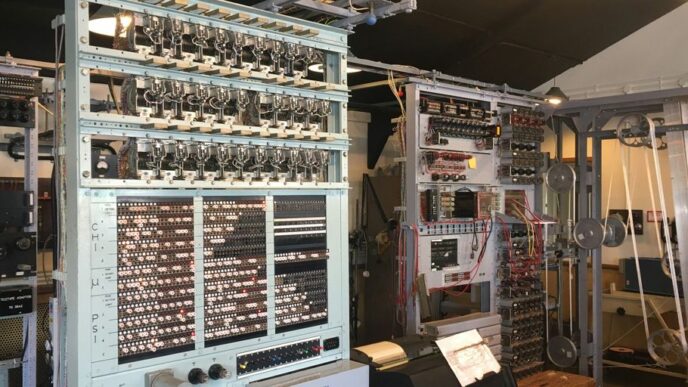Discover the transformative power of virtual reality (VR) and augmented reality (AR) in the metaverse. Explore new worlds, connect with others, and unlock limitless possibilities. Learn about the benefits, downsides, and how to get started with VR and AR in the metaverse. Revolutionize your digital experience today!
INTRODUCTION:
Are you ready to step into a world beyond your imagination? A place where reality and fantasy merge in ways you never thought possible? Welcome to the metaverse, a virtual universe that is transforming the way we interact with each other and our environment. At the core of this groundbreaking technology are two game-changing concepts: virtual reality (VR) and augmented reality (AR). In this article, we will delve into these technologies and their applications in the metaverse. From their advantages to potential drawbacks, we will explore everything you need to know about VR and AR in this exciting new world. So, let’s dive headfirst into the future of digital interaction!
What is the Metaverse?
The term “metaverse” has been buzzing in the tech world for some time now. But what exactly is it? Simply put, the metaverse is a collective virtual shared space that incorporates augmented reality and virtual reality technologies. It is an immersive digital environment where users can interact, create content, and experience new realities.
Think of it as a vast digital playground where users can explore new worlds and connect with others from around the globe in real-time. The metaverse enables individuals to engage in experiences that may be inaccessible due to physical limitations.
One of the remarkable aspects of the metaverse is its versatility, as it finds applications in gaming, entertainment, education, business, and more. Essentially, any activity involving interaction between people or objects can potentially be brought into the realm of the metaverse.
As technology continues to advance rapidly, we witness more opportunities for further development of this captivating concept. With companies like Facebook heavily investing in creating their own version of the Metaverse, it is undeniable that we will continue to hear more about this fascinating topic in the years to come.
What are Virtual Reality and Augmented Reality?
Virtual reality (VR) and augmented reality (AR) are two technological advancements that have transformed our digital experiences. VR immerses users in a fully simulated environment by wearing headsets, while AR overlays digital elements onto real-world surroundings using mobile devices or smart glasses.
In VR, users can interact with objects and navigate through settings in ways that were previously unimaginable. They can explore different worlds, engage in simulations, and even attend events from the comfort of their homes. On the other hand, AR enhances our physical environment by adding layers of information or visual effects to what we see in real life.
Both technologies offer endless possibilities for entertainment, education, and business purposes. From gaming to employee training programs and virtual property tours, the applications of VR and AR are limitless.
Although VR and AR have been around for some time, they continue to evolve rapidly with the emergence of new hardware and cutting-edge software applications. It is fascinating to observe how these technologies will transform various industries over time.
How can VR and AR be used in the Metaverse?
Virtual reality and augmented reality technologies are revolutionizing our digital world. In the metaverse, these innovative tools offer countless possibilities for businesses, creators, and users.
One of the most exciting applications of VR in the metaverse is immersive gaming experiences. Imagine entering a fully-realized virtual world where you can explore, compete, and interact with other players in real-time. With AR, this experience can be elevated further by seamlessly integrating physical objects and environments into gameplay.
However, VR and AR are not limited to entertainment. They have practical uses in fields such as education, healthcare, training simulations, architecture, and more. Medical professionals can utilize VR to simulate complex surgeries or treatments before performing them on patients. Architects can create impressive virtual models of their designs, allowing clients to experience them as if they were already built.
Furthermore, social media platforms like Facebook are heavily investing in the development of their own metaverses using VR technology, aiming to make online social interactions feel more natural than ever before.
With the myriad of potential applications for individuals and businesses, it is evident that there has never been a better time to explore what Virtual Reality and Augmented Reality have to offer within the Metaverse!
What are the Benefits of Using VR and AR in the Metaverse?
Utilizing virtual reality (VR) and augmented reality (AR) in the metaverse comes with numerous benefits. One of the primary advantages is the ability to experience a virtual world as if it were real, creating an immersive and interactive environment like never before.
Additionally, VR and AR technologies facilitate collaboration and communication on a whole new level. With these tools, individuals can interact with each other from anywhere in the world, bringing people together who may not have had the opportunity to connect otherwise.
Another benefit of using VR and AR in the metaverse is the expanded potential for education and training. For instance, medical students can practice surgical procedures in a simulated environment without risking harm to patients or themselves.
Moreover, businesses can use VR and AR technology to showcase their products or services in an engaging way that draws consumers into their brand story. This provides companies with an opportunity to build strong relationships with customers by offering memorable experiences they won’t soon forget.
Using VR and AR technology within the metaverse unlocks limitless potential for creativity across various industries, including entertainment and the gaming industry. It opens up unexplored avenues for innovation!
Are there any Downsides to Using VR and AR in the Metaverse?
While virtual reality (VR) and augmented reality (AR) are exciting technologies that promise to revolutionize our interaction with digital content, there are potential downsides to using them in the metaverse.
One of the major concerns surrounding VR and AR is their potential impact on physical health. Prolonged use can lead to eye strain, headaches, nausea, dizziness, and other discomforting symptoms. Developers must ensure that their applications incorporate adjustable settings for brightness and contrast levels, allowing users to customize their experience according to their preferences.
Another drawback of using VR and AR in the metaverse is the cost. High-quality headsets and hardware required for a seamless immersive experience can be expensive, making them inaccessible or unaffordable for everyone. This could create a divide between those who have access to high-quality equipment and those who do not.
While VR and AR technology has come a long way, with graphics being sharper than ever before, sometimes they may lack the level of realism required, causing moments that break immersion and prompt users to revert to traditional methods like gaming consoles.
Despite these challenges, many believe that if used responsibly, VR and AR technology will continue to evolve, becoming more efficient and addressing the downsides, leaving nothing but boundless possibilities.
How Can I Get Started with VR and AR in the Metaverse?
If you’re interested in getting started with VR and AR in the metaverse, there are a few steps you can take. First, conduct thorough research on the different virtual reality and augmented reality platforms available. With numerous options to choose from, finding one that suits your needs is crucial.
Once you have selected a platform, begin experimenting with building your own virtual worlds or adding interactive elements to existing ones. This will help you become comfortable working within the metaverse environment and enhance your understanding of VR and AR technology.
Another way to get started is by joining online communities focused on virtual reality and augmented reality development. These communities provide opportunities to connect with other developers who share similar interests and gain valuable tips and advice from experienced professionals.
It is also essential to stay updated on new developments in VR and AR technology, as they evolve rapidly. Attending conferences or workshops related to these technologies can be beneficial in learning about emerging trends and tools for developing immersive experiences.
The best way to embark on your VR and AR journey is by diving in headfirst! Experimentation is key when exploring new technologies like VR and AR. Don’t be afraid to make mistakes along the way, as they often lead to valuable discoveries.
Conclusion:
As technology continues to advance, the metaverse is becoming an increasingly integral part of our lives. Virtual reality and augmented reality are just two of the many technologies that can be utilized in this virtual world, offering an unprecedented level of immersion and interaction.
Whether you are exploring new worlds or creating your own, VR and AR offer endless possibilities within the metaverse. From gaming to education, these technologies provide numerous benefits that are only beginning to be explored.
However, it is important to approach these technologies with caution and moderation, as there are potential downsides such as addiction and disconnection from reality.
If you are interested in getting started with VR or AR in the metaverse, there are abundant online resources available for beginners. With practice and patience, anyone can become proficient in using these tools within virtual environments.
While not without risks, incorporating VR and AR into the metaverse holds tremendous potential for enhancing our experiences in this digital world. As we continue to explore this exciting realm of possibilities together as a society, the future of VR and AR in the metaverse looks promising.













